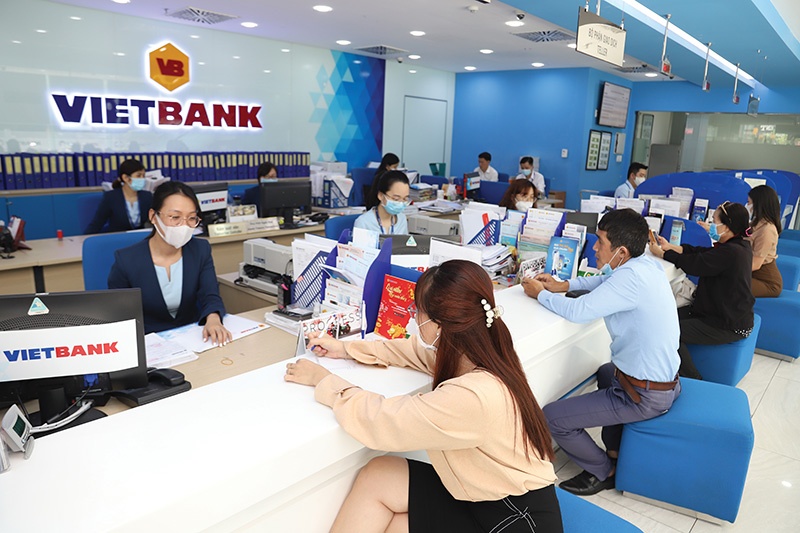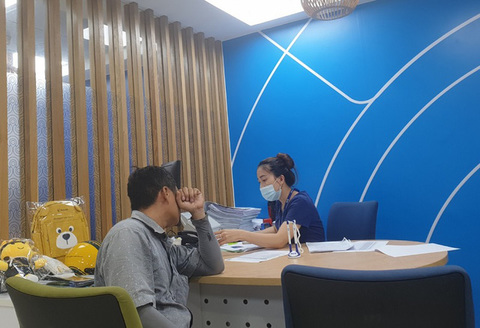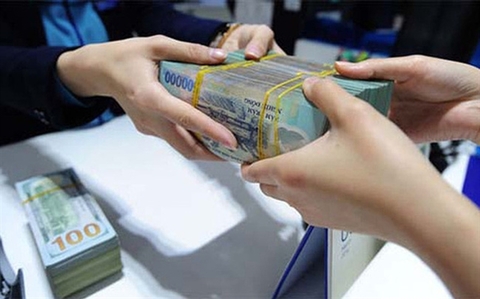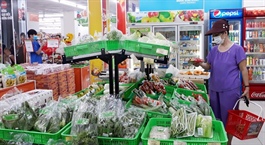Banks prioritise loans for at-risk businesses
Banks prioritise loans for at-risk businesses
Banks’ loan allocations will be distributed to much-needed sectors, such as production, while the central bank pledges to impose strict oversight over at-risk enterprises, notably over their real estate holdings, hazardous corporate bonds, and stocks in 2022.

According to data compiled by the State Bank of Vietnam (SBV), loan growth in the banking sector climbed by 13.53 per cent as of December 31, as compared to the end of 2020, and is predicted to expand by 14 per cent in 2022. With the introduction of a more flexible lending mechanism, as well as an interest rate support package of $1.74 billion, emphasis will be given to production and economic recovery.
By the end of 2021, capital mobilisation in Ho Chi Minh City grew by 7.5 per cent, and loans increased by 10.7 per cent. November saw credit in the region continue to rise at its current pace, with a gain of more than 2 per cent over the previous month. In December, credit in Ho Chi Minh City was 2 per cent more than it was in November.
Bank credit in Ho Chi Minh City surged for the second consecutive month after declining by 0.67 per cent in Q3/2021, indicating an upbeat signal for economic development and the revival of manufacturing activities. Prior to that, bank credit only rose by 0.2 per cent for the course of the whole third quarter of 2020.
On an on-year basis, the slope of M2 money supply and deposit growth peaked last April. It has fallen sharply since then as retail deposits posted almost zero on-month growth. Corporate deposits still had positive growth but were subjected to seasonality.
Viet Dragon Securities Company (VDSC) assessed that the accelerated credit growth in late 2021 came from two factors. The first one is the economic recovery after the reopening of the southern region, indicated by the rebound of macro-indicators regarding manufacturing and retail. The second is the additional credit growth quotas granted to several private commercial banks in the last days of the year. This is in line with the policy stance of the SBV. The central bank has voiced its opposition to credit inflows into high-risk sectors in 2022 as a primary objective of the industry to mitigate market volatility.
“The SBV would continue to maintain a tight grip on loans in risky areas, such as real estate, corporate bonds, build-operator-transfer projects, the securities industry, credit cards, and unsecured loans in 2022,” emphasised Nguyen Thi Hong, Governor of the SBV.
“There would be no letup in the scrutiny of speculative real estate and massive, high-risk enterprises,” added Dao Minh Tu, Deputy Governor of the SBV. “The central bank will continue to prioritise and offer favourable mechanisms for the residential real estate industry in order to meet legitimate customer needs.”
In a fresh survey on credit trends of credit institutions conducted by the Department of Forecast and Statistics under the SBV, banks in Vietnam also expect to slightly loosen the overall credit standards and apply them to most main focus fields, such as agriculture and production, in the first six months of 2022.
Nguyen Dinh Tung, general director of the OCB, noted that credit would rise in 2022 if public investment funds were disbursed promptly and more efficiently. Some major impediments of public divesture should be eliminated as well. “This year, banking loan growth is targeted at 13-14 per cent, and the economy’s attractiveness and capital consumption will strengthen,” he said.
Regarding 2022, VDSC predicted that business conditions will improve, which will curtail perceived credit risk in the economy and, therefore, boost credit supply and demand. The relief packages play a vital role in securing business confidence, enhancing circulation and cash flow while reducing expected credit losses, depending on the scale, progress and effectiveness of the stimulus and the recovery.
“After the recent congress, the 2022 policy stance will continue to be supportive with intention of injecting more money into the economy, which we believe to be partly through credit growth quota. Combining with sustained liquidity conditions in the short term, we expect robust credit growth in the first half of 2022,” the brokerage emphasised.
Credit growth in the industry is predicted to reach 13-14 per cent, equivalent to the target set by the SBV. However, VDSC foresees significant upside based on inflation and ramifications of the stimulus package, and is prepared for upward adjustment should the rationales become sound.
“In terms of deposits, we anticipate some stability in growth. In 2021 deposit growth was led by corporates, while in 2022, growth is projected to witness a recovery in retail deposits. However, we think corporate deposits will have better performance. Improved circulation backed by expansionary policies is expected to be the pivot point, affecting the slope of growth,” the brokerage stated.





















